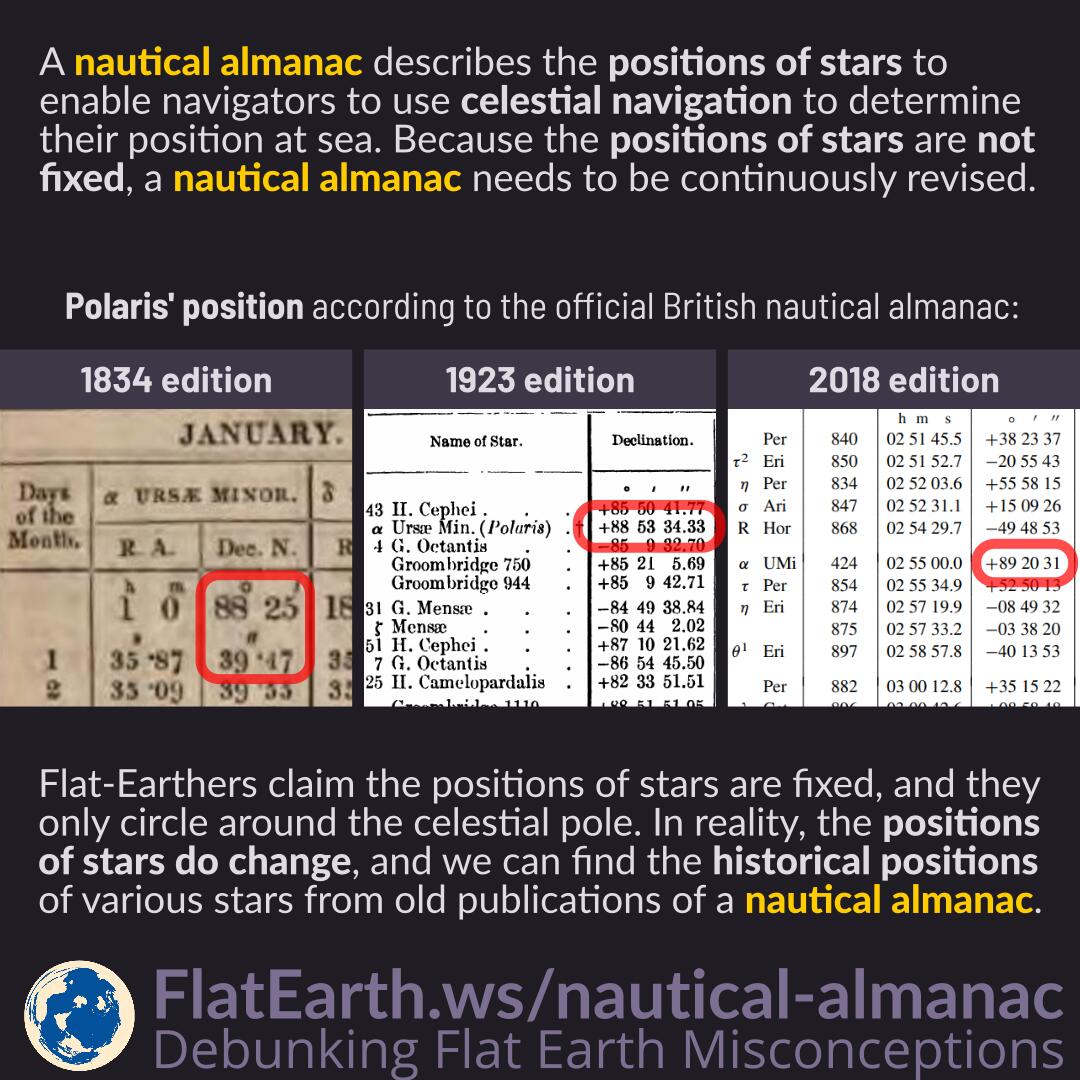A nautical almanac is a publication that describes the positions of stars to enable navigators to use celestial navigation to determine their position at sea. Because the positions of stars are not fixed, a nautical almanac needs to be continuously revised.
Flat-Earthers claim that the positions of stars are fixed, and they only circle the celestial pole. In reality, stars’ positions do change, and we can find the historical positions of various stars from old publications of a nautical almanac.
One of the most well-known nautical almanacs is published by the government of the United Kingdom. This nautical almanac was first published in 1767, and new revisions are published every year. From different revisions of this nautical almanac, we can see the shift of the stars’ positions.
We often see flat-Earthers claiming that Polaris always stays in the same position. From a nautical almanac, we can understand that contrary to what flat-Earthers claim, Polaris’ position does change over time. In 1834, the official British nautical almanac gave us that the declination of Polaris is 88°25’40”. However, in the 1923 edition, it is 88°53’35”, and in 2018, it became 89°20’31”.
The determination of a ship’s position from celestial navigation depends on the accuracy of stars’ position in the nautical almanac being used. Because we do not have a fundamental problem in celestial navigation, we can be sure that the positions of stars being reported in nautical almanacs are correct. And therefore, we can understand that the change in stars’ positions is indeed occurring.
References
- Nautical Almanac and Astronomical Ephemeris for the year 1834 – The Lords Commissioners of the Admiralty
- Nautical Almanac and Astronomical Ephemeris for the year 1923 – The Lords Commissioners of the Admiralty
- The Astronomical Almanac Online – U.S. Nautical Almanac Office, United States Naval Observatory (USNO), in the United States and Her Majesty’s Nautical Almanac Office (HMNAO), United Kingdom Hydrographic Office (UKHO), in the United Kingdom
- Nautical almanac – Wikipedia
- The Nautical Almanac – Wikipedia
- American Ephemeris and Nautical Almanac – Wikipedia
- Astronomical Almanac – Wikipedia


